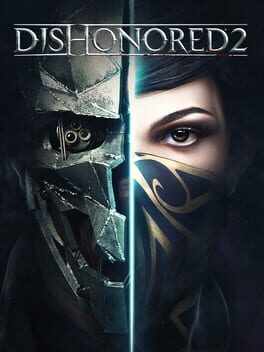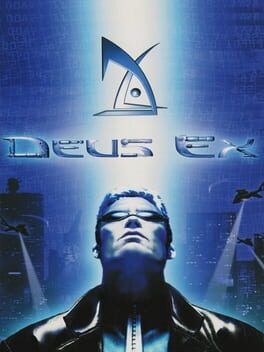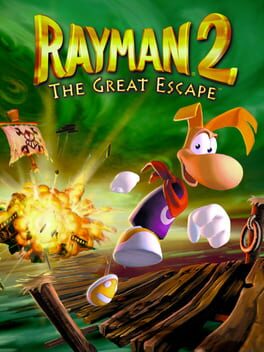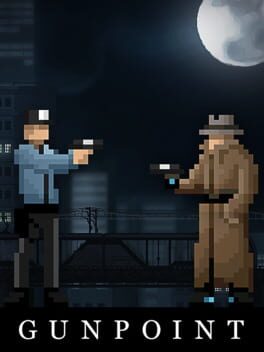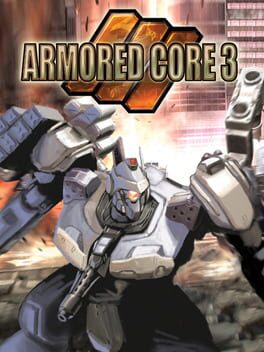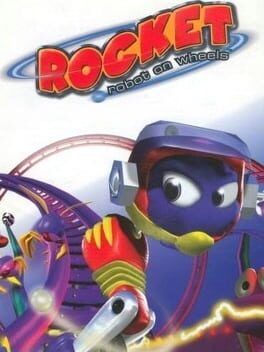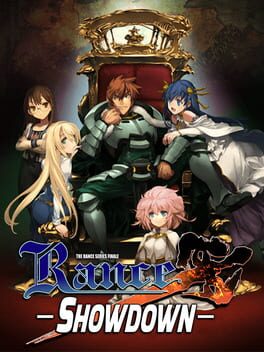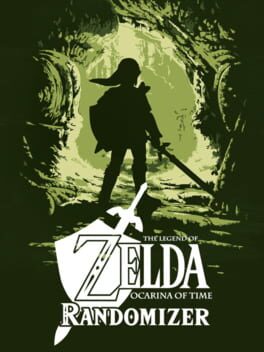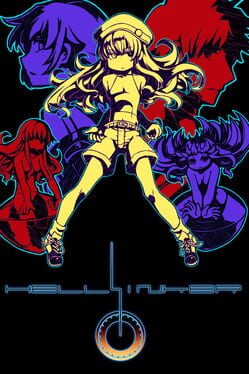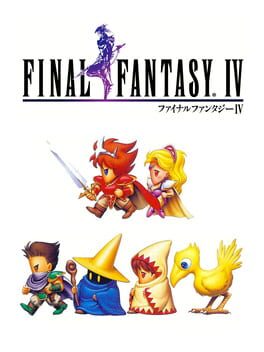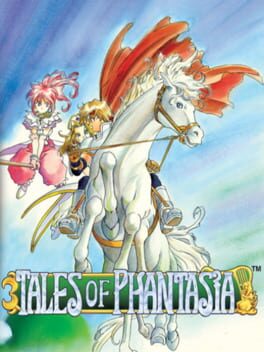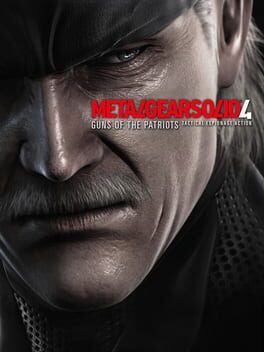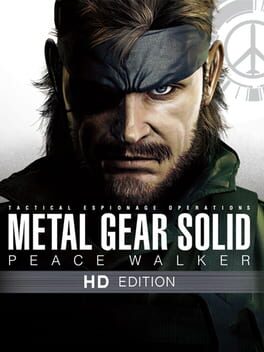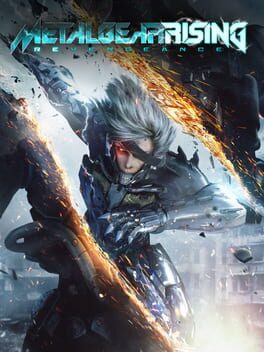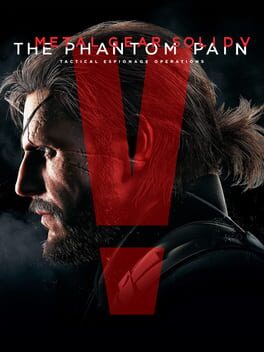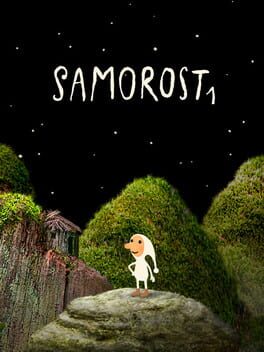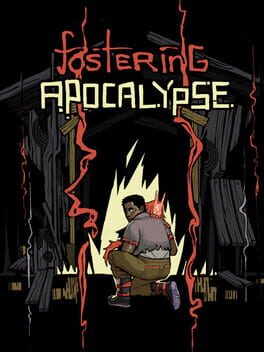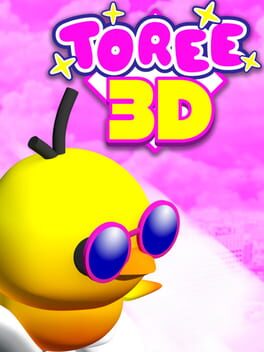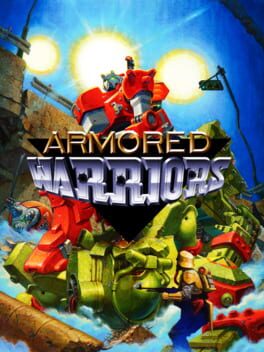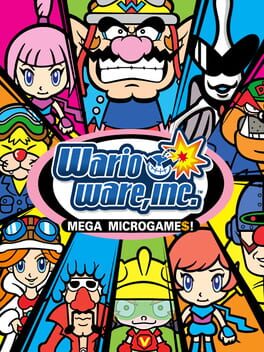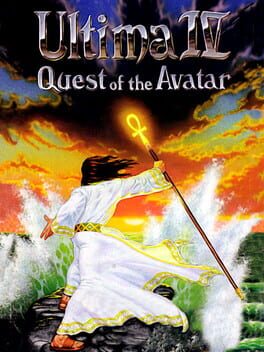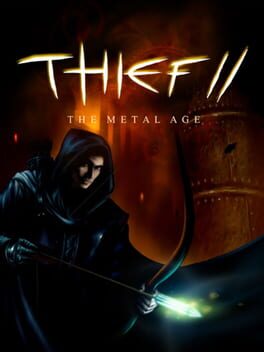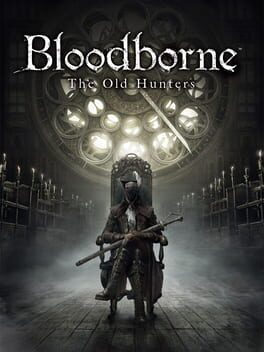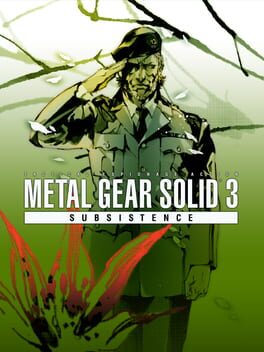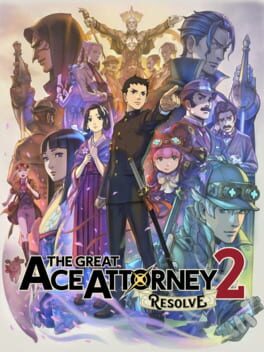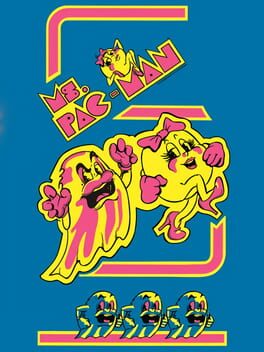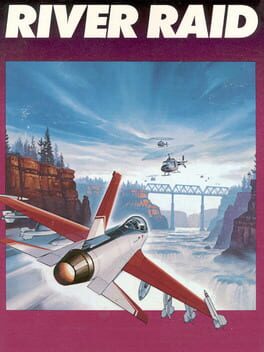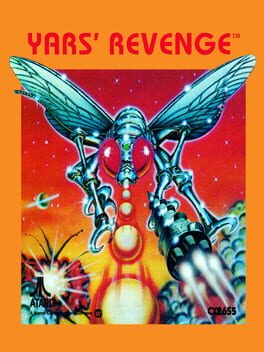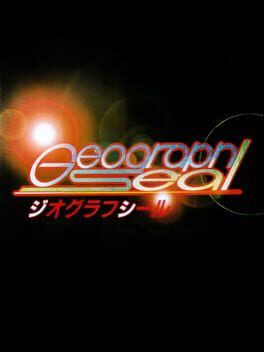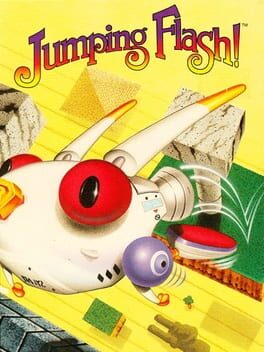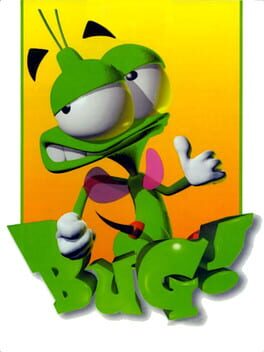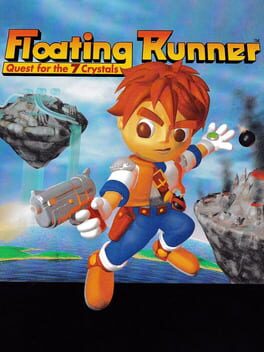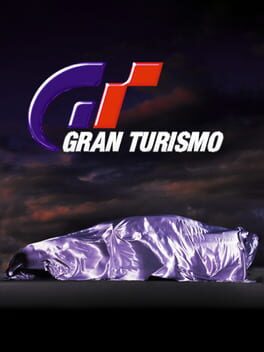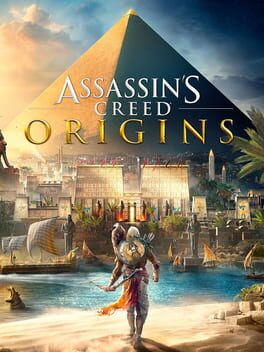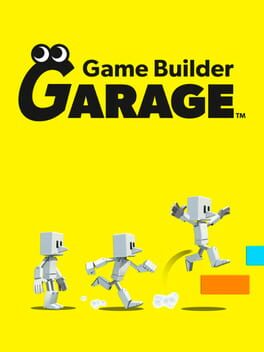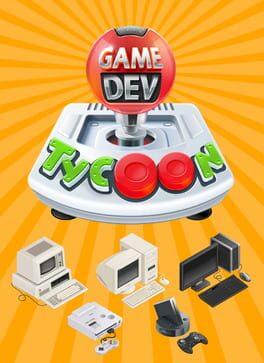chump
121 reviews liked by chump
Dishonored 2
2016
Dishonored 2, the ambitious sequel.
There are multiple high concept ideas explored throughout Dishonored 2. Many games would be content with only one.
There are the much talked about Clockwork and Stilton mansions. The formers level design is wonderfully confusing at first as it centres around altering the layout, it's up to the player how best to utilise the changing environment.
The latters timeshifting mechanic shines, letting the player jump between time periods and crucially having access to a window into the opposite. This sets the player up to exploit both enemies and the architecture.
In both instances it must have been a major development hurdle, not only functionally but to get it all working so seemlessly.
Level design generally is top notch.
Even more traditional levels throw curve balls like the Dust District which sets up two warring factions you will have to manouver between and potentially side with one or another.
Interweaving and multi-layered levels let you gradually build up a mental map and leave open multiple approaches. All wrapped up in the classic imsim tradition of internally consistent rulesets. The items on sale in the black market shops really are just sitting there and you instantly get the sense that there are ways behind the counter to literally steal them. Heavily context sensitive triggers exist but are largely shuned in favor of simply letting the player work within the playspace.
One moment that encapsulates this player driven problem solving was when I decided to try attaching a stun mine to a bloatfly and turned it into an effective drone.
Playstyles are enhanced by the games skill shop, by picking up runes scattered throughout levels you can spec into a variety of roles. It quickly became evident that I had no use for pistol upgrades (went for powers, stealth no kills playthrough) but it is clear there is a wealth of options if the player wants to mix things up and I look forward to trying a more combat focused approach. Even though I always aimed for no kills or detection I tried to not rely on save scumming too much and embraced "screw ups" as much as possible and this was rewarded with some dynamic events such as barging into a guard who discovered me, sending him tumbling over a railing as I snuck away from the scene of the crime.
Thankfully a "no power" run is contextually acknowledged by the game as you can pass up the Outsiders Mark. I can imagine this would be tough but satisfying as the player will have to rely more so on other elements like gadgets and distraction techniques, whether for stealth or offence. Just more playstyles on the table.
I was surprised how invested I got in the world of Dishonored 2. The art style is stunning and vividly, almost literally paints a harsh yet beautiful world. Details regarding power generation via wind and whale are very much felt but so are the more personal details like finding the workshop of the person who sculpted most of the statues you find throughout the Karnaca and of course one of the main antagonists (Jindosh) inventions are never very far away.
My only real issues being that of many guards operating in very small routes, a few more longer routes could really have put the player, especially those looking to go undetected under pressure to observe and learn their routes. Interrogation options are conspicuously absent which could have alleviated the need to find and read so many documents to find clues. Thankfully guards do seem to sometimes look for their strangely absent collegues but more often than not a perpetually knocked out guard will never be found. Non lethal options being practially identical to lethal is a bug bear with me and Dishonored 2 falls into this trap although at least there are options for longer activation time for sleep darts and you always have the option for attempting maximum avoidance anyway. Other than that there was a fairly frequent graphical glitch that caused green lights to flicker on screen.
In terms of the narrative, it really hinges on the machinations of the big players you are tasked with taking down one way or another and they do not dissappoint. Each has a unique personality and motivations, they are (mostly) mortal so operate under the same rules as any guard so taking them out can be done any which way. Narratively though there is always another approach beyond a kill which has far more steps, yet also provides more satisfying plot repercussions in my opinion. Still, a creative kill is just as valid.
I played as Corvo on this run. While he plays a fairly standard role of protector/saviour, he also has a more direct connection to Serkonos as he was born and brought up there. This sells the depth of the game world where it is clear how much exists outside the famous Dunwall. The fact that the plight of Karnaca which has been suffering under the new Duke is partly laid at the feet of Corvo and Emily was a nice touch. It adds an element of realism to the institutions and prevents Corvo and Emily coming off as squeky clean protagonists. I look forward to playing as Emily and seeing how things play out differently.
Overall I was thouroughly impressed by Dishonored 2. It combines rich level design and scenarios with sandbox player driven mechanics, all wrapped up in a compelling narrative and beautiful artsyle.
There are multiple high concept ideas explored throughout Dishonored 2. Many games would be content with only one.
There are the much talked about Clockwork and Stilton mansions. The formers level design is wonderfully confusing at first as it centres around altering the layout, it's up to the player how best to utilise the changing environment.
The latters timeshifting mechanic shines, letting the player jump between time periods and crucially having access to a window into the opposite. This sets the player up to exploit both enemies and the architecture.
In both instances it must have been a major development hurdle, not only functionally but to get it all working so seemlessly.
Level design generally is top notch.
Even more traditional levels throw curve balls like the Dust District which sets up two warring factions you will have to manouver between and potentially side with one or another.
Interweaving and multi-layered levels let you gradually build up a mental map and leave open multiple approaches. All wrapped up in the classic imsim tradition of internally consistent rulesets. The items on sale in the black market shops really are just sitting there and you instantly get the sense that there are ways behind the counter to literally steal them. Heavily context sensitive triggers exist but are largely shuned in favor of simply letting the player work within the playspace.
One moment that encapsulates this player driven problem solving was when I decided to try attaching a stun mine to a bloatfly and turned it into an effective drone.
Playstyles are enhanced by the games skill shop, by picking up runes scattered throughout levels you can spec into a variety of roles. It quickly became evident that I had no use for pistol upgrades (went for powers, stealth no kills playthrough) but it is clear there is a wealth of options if the player wants to mix things up and I look forward to trying a more combat focused approach. Even though I always aimed for no kills or detection I tried to not rely on save scumming too much and embraced "screw ups" as much as possible and this was rewarded with some dynamic events such as barging into a guard who discovered me, sending him tumbling over a railing as I snuck away from the scene of the crime.
Thankfully a "no power" run is contextually acknowledged by the game as you can pass up the Outsiders Mark. I can imagine this would be tough but satisfying as the player will have to rely more so on other elements like gadgets and distraction techniques, whether for stealth or offence. Just more playstyles on the table.
I was surprised how invested I got in the world of Dishonored 2. The art style is stunning and vividly, almost literally paints a harsh yet beautiful world. Details regarding power generation via wind and whale are very much felt but so are the more personal details like finding the workshop of the person who sculpted most of the statues you find throughout the Karnaca and of course one of the main antagonists (Jindosh) inventions are never very far away.
My only real issues being that of many guards operating in very small routes, a few more longer routes could really have put the player, especially those looking to go undetected under pressure to observe and learn their routes. Interrogation options are conspicuously absent which could have alleviated the need to find and read so many documents to find clues. Thankfully guards do seem to sometimes look for their strangely absent collegues but more often than not a perpetually knocked out guard will never be found. Non lethal options being practially identical to lethal is a bug bear with me and Dishonored 2 falls into this trap although at least there are options for longer activation time for sleep darts and you always have the option for attempting maximum avoidance anyway. Other than that there was a fairly frequent graphical glitch that caused green lights to flicker on screen.
In terms of the narrative, it really hinges on the machinations of the big players you are tasked with taking down one way or another and they do not dissappoint. Each has a unique personality and motivations, they are (mostly) mortal so operate under the same rules as any guard so taking them out can be done any which way. Narratively though there is always another approach beyond a kill which has far more steps, yet also provides more satisfying plot repercussions in my opinion. Still, a creative kill is just as valid.
I played as Corvo on this run. While he plays a fairly standard role of protector/saviour, he also has a more direct connection to Serkonos as he was born and brought up there. This sells the depth of the game world where it is clear how much exists outside the famous Dunwall. The fact that the plight of Karnaca which has been suffering under the new Duke is partly laid at the feet of Corvo and Emily was a nice touch. It adds an element of realism to the institutions and prevents Corvo and Emily coming off as squeky clean protagonists. I look forward to playing as Emily and seeing how things play out differently.
Overall I was thouroughly impressed by Dishonored 2. It combines rich level design and scenarios with sandbox player driven mechanics, all wrapped up in a compelling narrative and beautiful artsyle.
Deus Ex
2000
a triumph for scenario design aficionados. hour after hour of slices of the real world perfectly aligned into a playground of roving militants and hapless civilians. rarely does a game ever make its missions feel properly explorable while keeping it taut and linear at the same time, and yet deus ex routinely weaves both together. for every point A to point B underground lair with traps laid out in sequence there is a completely open venue, such as the suffocating catacombs and their dimly lit hallways giving way to the Champs-Élysées avenue of paris, with a bakery to pilfer contraband drugs from, a hostel with full bar access, and an arms dealer's loaded apartment, all off the beaten path from your main objective. military bases and science labs retain the layout you'd expect had you ever toured one, and you'll find that locker rooms, rows of cubicles, and break rooms feature just as prominently in the dungeon crawling as warehouses with guards patrolling or tightly wound mazes of laser tripwires and turrets. the authenticity and legibility of these areas comes first, and yet more often than not the designers still manage to weave in appropriate challenges without violating each location's fidelity in the process.
and really, dungeon crawling is the name of the game here, more or less. at least half of the game takes place in some sort of complex with a destination and a set of non-linear gates along the way, all of which serve as hinge points for the player to choose which resources to expend. the "immsim" label comes from just how many resources have all gotten slammed together in your control: lockpicks and "multitools" for bypassing security, ammo for many different varieties of firearms, bio-energy for utilizing your augmented abilities, and a slew of consumable items meant for tanking bullets, running past enemies undetected, or breathing under water for long periods of time. at its most taut, the game generally puts some sort of barrier up in your way and then a way around it, with the direct option being something like combat or picking a lock and the indirect option being finding a vent or waterway to circumvent the barrier. with enough of these situations back to back, the game hopes that you'll avoid sticking to one gameplay style in order to preserve your resources in that area for later when they seem more necessary; you can't crack every door with lockpicks, so you'll probably have to get your hands dirty or crawl on your belly here and there if you want to keep your picks for when the alternative is, say, running through a irradiated area. the nice part of this is that it truly does work: I explored, snuck around, and fought off enemies all in equal measure throughout the game through entirely organic response to each of the situations. the downside is by endgame the resource economy has completely turned in your favor assuming you've been rotating all of your options, making decisions on resource expenditure past a certain point much more about cleaning out your inventory rather than rationing.
when the game is firing on all cylinders, you'll get something like bunker III from the aforementioned catacombs. the area is two large rooms with a camera and turret tracking you at the back of the first room right in front of a cell full of hostages, multiple floors connected by stairs with archways for cover in the second room, and a back hallway swarming with rocket-strapped operatives where the camera/turret controls and a key to the next reside; a waterway additionally connects the front of the first room with the back of the second room. here you have actual tradeoffs to deal with: just grabbing the key and skipping the whole area by going through the waterway, but the coverage in the back hallway can be intense depending on the AI's behavior, and your direct path to the key is blocked by strategically placed crates as soon as you leave the waterway. gunning for the security controls instead is feasible, and you can leverage the fact that hacking computers (sometimes?) pauses enemies for a bit to quickly run out, disable everything, and hop back in the waterway. you could also sneak in from the front and use an augmentation that hides you from cameras to avoid triggering the turret, and if you rescue the hostages with lockpicks instead of locating the cell key and leave the area early, you'll get the next area's key from their camp leader anyway. when the game constructs situations like these, they not only make the discrete tradeoffs impactful on the flow of a given level, they also weave it into the actual second-to-second movement, stealth, and combat as well.
at its worst it's the opposite: individual rooms with a guard or two and maybe a computer system or locked door stitched together by long hallways that inoculate each scenario from one another. in these sections the main appeal is exploration, either through finding nooks and crannies hidden from view or by reading the many "data cubes" with flavor text strewn around. it can still be exciting, especially earlier on when you don't have tools to detect enemies through walls and the suspense of moving around still persists. later in the game when one has more abilities at their disposal, breaking apart puzzles or barriers by jumping over them with enhanced height, moving large crates to use as stairs with enhanced strength, or shooting down doors with a mastered rifle ability can potentially make the monotony less apparent. some of the barriers don't fare quite as well due to a lackluster implementation: the hacking, for instance, is more or less free even with minimal upgrades, and for every camera you have to actually maneuver around there's at least four you'll disable without thinking just because the security terminals are easy to access. if the mission locations didn't adhere to the small details of real environments or didn't have cute little secrets in vents and lock-boxes, these issues would likely overcome the holistic experience and result in tedium.
the tiny details extend further than objects in the world as well. from early on when one of your augmented colleagues begins spontaneously complaining about getting the wrong can of soda from a vending machine, I had hoped that the scripting for the NPCs would stay high quality, and it absolutely persisted to the final moments of the game, when a civilian mechanic distraught by my actions pulled a gun on me behind my back. the tight pacing of the levels compared to a full open world experience allows for many of the individual NPCs to have unique dialogue, behavior, and even inventory when subdued. of these the most fascinating to me may have been a conversation with a chinese bartender in hong kong, who extolled the CCP's commitment to capitalist enterprise outside the purview of the new world order by emphasizing authoritarian nationalism against main character denton's idealized western democratic order. it's something you wouldn't see now in the xi jinping era and weirdly reflective of the game's almost non-ideological view of politics: people-facing organizations controlled by layers upon layers of shadowy organizations, each manipulating social behavior in a top-down way compared to the bottom-up class struggle and ideological superstructure of reality. not really a thought-provoking work unless you're particularly animated by vague gesturing towards "control" and "liberty," but at least you can tell the developers didn't take it too seriously either. there's roswell-style gray aliens running around for christ's sake.
and really, dungeon crawling is the name of the game here, more or less. at least half of the game takes place in some sort of complex with a destination and a set of non-linear gates along the way, all of which serve as hinge points for the player to choose which resources to expend. the "immsim" label comes from just how many resources have all gotten slammed together in your control: lockpicks and "multitools" for bypassing security, ammo for many different varieties of firearms, bio-energy for utilizing your augmented abilities, and a slew of consumable items meant for tanking bullets, running past enemies undetected, or breathing under water for long periods of time. at its most taut, the game generally puts some sort of barrier up in your way and then a way around it, with the direct option being something like combat or picking a lock and the indirect option being finding a vent or waterway to circumvent the barrier. with enough of these situations back to back, the game hopes that you'll avoid sticking to one gameplay style in order to preserve your resources in that area for later when they seem more necessary; you can't crack every door with lockpicks, so you'll probably have to get your hands dirty or crawl on your belly here and there if you want to keep your picks for when the alternative is, say, running through a irradiated area. the nice part of this is that it truly does work: I explored, snuck around, and fought off enemies all in equal measure throughout the game through entirely organic response to each of the situations. the downside is by endgame the resource economy has completely turned in your favor assuming you've been rotating all of your options, making decisions on resource expenditure past a certain point much more about cleaning out your inventory rather than rationing.
when the game is firing on all cylinders, you'll get something like bunker III from the aforementioned catacombs. the area is two large rooms with a camera and turret tracking you at the back of the first room right in front of a cell full of hostages, multiple floors connected by stairs with archways for cover in the second room, and a back hallway swarming with rocket-strapped operatives where the camera/turret controls and a key to the next reside; a waterway additionally connects the front of the first room with the back of the second room. here you have actual tradeoffs to deal with: just grabbing the key and skipping the whole area by going through the waterway, but the coverage in the back hallway can be intense depending on the AI's behavior, and your direct path to the key is blocked by strategically placed crates as soon as you leave the waterway. gunning for the security controls instead is feasible, and you can leverage the fact that hacking computers (sometimes?) pauses enemies for a bit to quickly run out, disable everything, and hop back in the waterway. you could also sneak in from the front and use an augmentation that hides you from cameras to avoid triggering the turret, and if you rescue the hostages with lockpicks instead of locating the cell key and leave the area early, you'll get the next area's key from their camp leader anyway. when the game constructs situations like these, they not only make the discrete tradeoffs impactful on the flow of a given level, they also weave it into the actual second-to-second movement, stealth, and combat as well.
at its worst it's the opposite: individual rooms with a guard or two and maybe a computer system or locked door stitched together by long hallways that inoculate each scenario from one another. in these sections the main appeal is exploration, either through finding nooks and crannies hidden from view or by reading the many "data cubes" with flavor text strewn around. it can still be exciting, especially earlier on when you don't have tools to detect enemies through walls and the suspense of moving around still persists. later in the game when one has more abilities at their disposal, breaking apart puzzles or barriers by jumping over them with enhanced height, moving large crates to use as stairs with enhanced strength, or shooting down doors with a mastered rifle ability can potentially make the monotony less apparent. some of the barriers don't fare quite as well due to a lackluster implementation: the hacking, for instance, is more or less free even with minimal upgrades, and for every camera you have to actually maneuver around there's at least four you'll disable without thinking just because the security terminals are easy to access. if the mission locations didn't adhere to the small details of real environments or didn't have cute little secrets in vents and lock-boxes, these issues would likely overcome the holistic experience and result in tedium.
the tiny details extend further than objects in the world as well. from early on when one of your augmented colleagues begins spontaneously complaining about getting the wrong can of soda from a vending machine, I had hoped that the scripting for the NPCs would stay high quality, and it absolutely persisted to the final moments of the game, when a civilian mechanic distraught by my actions pulled a gun on me behind my back. the tight pacing of the levels compared to a full open world experience allows for many of the individual NPCs to have unique dialogue, behavior, and even inventory when subdued. of these the most fascinating to me may have been a conversation with a chinese bartender in hong kong, who extolled the CCP's commitment to capitalist enterprise outside the purview of the new world order by emphasizing authoritarian nationalism against main character denton's idealized western democratic order. it's something you wouldn't see now in the xi jinping era and weirdly reflective of the game's almost non-ideological view of politics: people-facing organizations controlled by layers upon layers of shadowy organizations, each manipulating social behavior in a top-down way compared to the bottom-up class struggle and ideological superstructure of reality. not really a thought-provoking work unless you're particularly animated by vague gesturing towards "control" and "liberty," but at least you can tell the developers didn't take it too seriously either. there's roswell-style gray aliens running around for christ's sake.
In 1988, Super Mario Bros. 3 set a gold standard for 2D platformers. Intricate, challenging level design with an excellent sense of surprise and flow, it managed to trump its already solid predecessors. For many, Super Mario World would go on to become the plumber’s high point with its secret exits. I, however, found it vanilla. Sprawling, empty fields with no identity and worse momentum than the previous outing. To me, it was the start of the series’ stagnation. Super Mario Land 2 had more imagination, but it was made for a device less powerful than the NES, limiting its scope. The next 2D entry, New Super Mario Bros., would not arrive for more than a decade. It, along with its sequels, had droplets of inspiration, but they were lost in a sea of mediocrity.
Between revitalizing Mario for a new generation and creating a worthy successor to the classics, Wonder had Bowser-sized shoes to fill. Ditching “New” in the title was not just Nintendo promising to be better than NSMB, but a declaration that 2D installments are still relevant in a post-Mario Maker world. So, does Wonder fulfill that promise?
YES!!
Wonder is the best 2D Mario since Super Mario Bros 3. I completed the game twice for this review. I first did a co-op playthrough with my wife, and then went through it in single-player. I will be focusing on the single-player because that feels like the intended way to play. While I had fun in multiplayer, it could have used some work. Many of the stages move so quickly that keeping even two players alive is a challenge, particularly during certain wonder effects. Even worse is the camera priority. For some bizarre reason, it targets the character who jumped highest on the last flagpole instead of who is closest to the top or right edge of the screen, only switching players when the leader loses a life. As bland as NSMB was, its multiplayer experience was far more consistent than this.
The main draw of Mario Wonder is the wonder flowers, which temporarily change the stage. These provide exciting shake-ups to the main level design, which is not to say everything before the flower is boring. Quite the opposite! I’ve seen criticism of the flowers for segmenting the fun part of levels from everything else, throwing in a random gimmick for shock value. I could not disagree more on this, for three reasons. First, 2D Mario has been built on gimmicks since Mario 3. Second, the effects always have a thematic link to the level’s main gimmick. In Jewel-Block Cave, for example, you dodge crushers and break crystals, and the Wonder Flower has you do the same thing on a larger scale. And third, while some Wonder effects change the controls, they all follow Miyamoto’s timeless design philosophy of being introduced in a safe environment before challenging the player. Instead of shallow magician tricks, the Wonder Flowers compliment level design that was already great to begin with.
One thing I was worried about prior to release was the world themes. Thankfully, the game proved me wrong. While I wouldn’t say these are as wacky as what Land 2 gifted us, they are more imaginative than NSMB and far more varied than World. My favorite one is the desert. Instead of generic rolling sands, it’s a mysterious ancient palace. What really helps each world stand out is the new cast of enemies. There are so many new foes that the token Goombas, Koopas, and Piranha Plants are relegated to supporting roles, a series rarity. Every foe is used wherever appropriate, even if that means being in just one level. To me, that is further proof the levels were made to house fun gameplay above all else.
As much as I enjoyed Wonder though, there are areas for improvement. Firstly, Nintendo could flesh out Mario’s core moveset a lot more. The badges are supposed to compensate for this, but I found them to be a mixed bag overall. I like that every character controls the same so everyone can play as their favorite character and have the same physics. If players want different controls, some of these badges can be equipped to provide traits from prior games, which include but are not limited to the crouch jump from Mario 2, a Luigi-style high jump, and a Peach-style glide (parachute cap). However, some of these abilities could have easily been part of the core moveset, like the triple jump and dolphin kick. Giving the cast a more dynamic moveset has a lot of untapped potential. For example, the Mega Man X wall jump badge could have allowed for more verticality in some of the level design, but since its optional, only a few badge challenges take advantage of it. For the inevitable sequel, the moveset is where I hope Nintendo starts their work.
I’m also mixed on the new power-ups. The Elephant Fruit is new for the series and the trunk is very effective at attacking enemies and breaking blocks, but I don’t think it’s amazing. As one of the few people who really likes DKC3, I couldn’t help but notice the similarities to Ellie. They’re not identical, but I question why Nintendo advertised it beyond the inherent sillyness of Mario becoming an elephant. It’s just not as versatile as the raccoon, cape, and penguin suits from past games. Less impressive is the Bubble Flower, which is just the blue baby Yoshi from NSMB U. Even ignoring that, it overlaps too heavily with the returning fire flower and numerous jumping badges. Fortunately, the Drill Mushroom has more to offer with its ceiling traversal and complete protection from enemies while underground. While not as flashy as Super Mario Galaxy 2’s incarnation, the tweaks end up complimenting the core platforming a lot better, just as a power-up should.
The secret exits left a lot to be desired. World had a whopping 24, but that number declined with every passing console entry. By the time we got to Mario/Luigi U, we had 12. Wonder goes even further, with a grand total of 7. It’s impossible not to be disappointed when there is only one more secret exit than Mario Land 2! The exits themselves mostly exist for accessing the special world levels, but there are two jarring instances where uncovering said levels is as simple as revisiting the place where you found the world’s Royal Seed, this game’s version of Grand Stars. These two Royal Seeds have zero platforming challenges attached to them and it’s a missed opportunity to add more secret exits.
The other four Royal Seeds are locked behind the worst feature of Wonder: Bowser Jr. Everyone was sick of fighting him multiple times in NSMB DS, and he’s not much better here. Four near-identical skirmishes where you jump on him not three, but four times! WHOA! I should also mention the airship levels, which all share the same Wonder effect and ending setpiece. Nintendo clearly didn’t pay attention to what Sonic, Donkey Kong, and countless other platformers achieved with bosses in the genre. I’ll even go as far as to say NSMB had more to offer. Excluding NSMB 2, each of these titles either had unique bosses or gave the Koopalings different arenas or tactics. The Bowser fight from Wii is also one of the best final bosses in the 2D games. Wonder’s final boss was also fun and bucks the Giant Bowser trope, but it shouldn’t have been the ONLY fun boss.
Much has been said about Mario Wonder’s difficulty. It is true modern Mario games do not get hard until the special world. To an extent, I understand why this is the case. Mario games are supposed to be for everyone, but the franchise has existed for so long that most long-time fans have much sharper platforming skills than newcomers and thus need a challenge. Between the badges and online features like standees, it has never been easier to finish a Mario game. However, it’s important to note that veterans can easily ignore these features. On top of that, Nintendo used free-roaming sections on the map to offer more challenging courses for veterans that beginners can ignore until they’re ready. These courses are nowhere near as challenging as the NES games, but like the rest of Wonder, they are unique and fun, and the special world has almost a dozen tough courses. I could have done without the break time levels though. They are ridiculously short and would have been better off as one-time obstacles for Purple 10 Coins, Wonder’s equivalent of Star Coins.
Mario Wonder’s missed opportunities prevent me from considering it the best of the plumber’s side-scrolling adventures. However, it is a breath of fresh air after decades of stagnation. Between this, a new Princess Peach game, and remakes of delightfully weird Mario RPGs, it feels like a new, creative era has begun for the franchise. If I’m right, then even more exciting things are to come! The fact this franchise can be so captivating after nearly 40 years is truly wonderful!
Between revitalizing Mario for a new generation and creating a worthy successor to the classics, Wonder had Bowser-sized shoes to fill. Ditching “New” in the title was not just Nintendo promising to be better than NSMB, but a declaration that 2D installments are still relevant in a post-Mario Maker world. So, does Wonder fulfill that promise?
YES!!
Wonder is the best 2D Mario since Super Mario Bros 3. I completed the game twice for this review. I first did a co-op playthrough with my wife, and then went through it in single-player. I will be focusing on the single-player because that feels like the intended way to play. While I had fun in multiplayer, it could have used some work. Many of the stages move so quickly that keeping even two players alive is a challenge, particularly during certain wonder effects. Even worse is the camera priority. For some bizarre reason, it targets the character who jumped highest on the last flagpole instead of who is closest to the top or right edge of the screen, only switching players when the leader loses a life. As bland as NSMB was, its multiplayer experience was far more consistent than this.
The main draw of Mario Wonder is the wonder flowers, which temporarily change the stage. These provide exciting shake-ups to the main level design, which is not to say everything before the flower is boring. Quite the opposite! I’ve seen criticism of the flowers for segmenting the fun part of levels from everything else, throwing in a random gimmick for shock value. I could not disagree more on this, for three reasons. First, 2D Mario has been built on gimmicks since Mario 3. Second, the effects always have a thematic link to the level’s main gimmick. In Jewel-Block Cave, for example, you dodge crushers and break crystals, and the Wonder Flower has you do the same thing on a larger scale. And third, while some Wonder effects change the controls, they all follow Miyamoto’s timeless design philosophy of being introduced in a safe environment before challenging the player. Instead of shallow magician tricks, the Wonder Flowers compliment level design that was already great to begin with.
One thing I was worried about prior to release was the world themes. Thankfully, the game proved me wrong. While I wouldn’t say these are as wacky as what Land 2 gifted us, they are more imaginative than NSMB and far more varied than World. My favorite one is the desert. Instead of generic rolling sands, it’s a mysterious ancient palace. What really helps each world stand out is the new cast of enemies. There are so many new foes that the token Goombas, Koopas, and Piranha Plants are relegated to supporting roles, a series rarity. Every foe is used wherever appropriate, even if that means being in just one level. To me, that is further proof the levels were made to house fun gameplay above all else.
As much as I enjoyed Wonder though, there are areas for improvement. Firstly, Nintendo could flesh out Mario’s core moveset a lot more. The badges are supposed to compensate for this, but I found them to be a mixed bag overall. I like that every character controls the same so everyone can play as their favorite character and have the same physics. If players want different controls, some of these badges can be equipped to provide traits from prior games, which include but are not limited to the crouch jump from Mario 2, a Luigi-style high jump, and a Peach-style glide (parachute cap). However, some of these abilities could have easily been part of the core moveset, like the triple jump and dolphin kick. Giving the cast a more dynamic moveset has a lot of untapped potential. For example, the Mega Man X wall jump badge could have allowed for more verticality in some of the level design, but since its optional, only a few badge challenges take advantage of it. For the inevitable sequel, the moveset is where I hope Nintendo starts their work.
I’m also mixed on the new power-ups. The Elephant Fruit is new for the series and the trunk is very effective at attacking enemies and breaking blocks, but I don’t think it’s amazing. As one of the few people who really likes DKC3, I couldn’t help but notice the similarities to Ellie. They’re not identical, but I question why Nintendo advertised it beyond the inherent sillyness of Mario becoming an elephant. It’s just not as versatile as the raccoon, cape, and penguin suits from past games. Less impressive is the Bubble Flower, which is just the blue baby Yoshi from NSMB U. Even ignoring that, it overlaps too heavily with the returning fire flower and numerous jumping badges. Fortunately, the Drill Mushroom has more to offer with its ceiling traversal and complete protection from enemies while underground. While not as flashy as Super Mario Galaxy 2’s incarnation, the tweaks end up complimenting the core platforming a lot better, just as a power-up should.
The secret exits left a lot to be desired. World had a whopping 24, but that number declined with every passing console entry. By the time we got to Mario/Luigi U, we had 12. Wonder goes even further, with a grand total of 7. It’s impossible not to be disappointed when there is only one more secret exit than Mario Land 2! The exits themselves mostly exist for accessing the special world levels, but there are two jarring instances where uncovering said levels is as simple as revisiting the place where you found the world’s Royal Seed, this game’s version of Grand Stars. These two Royal Seeds have zero platforming challenges attached to them and it’s a missed opportunity to add more secret exits.
The other four Royal Seeds are locked behind the worst feature of Wonder: Bowser Jr. Everyone was sick of fighting him multiple times in NSMB DS, and he’s not much better here. Four near-identical skirmishes where you jump on him not three, but four times! WHOA! I should also mention the airship levels, which all share the same Wonder effect and ending setpiece. Nintendo clearly didn’t pay attention to what Sonic, Donkey Kong, and countless other platformers achieved with bosses in the genre. I’ll even go as far as to say NSMB had more to offer. Excluding NSMB 2, each of these titles either had unique bosses or gave the Koopalings different arenas or tactics. The Bowser fight from Wii is also one of the best final bosses in the 2D games. Wonder’s final boss was also fun and bucks the Giant Bowser trope, but it shouldn’t have been the ONLY fun boss.
Much has been said about Mario Wonder’s difficulty. It is true modern Mario games do not get hard until the special world. To an extent, I understand why this is the case. Mario games are supposed to be for everyone, but the franchise has existed for so long that most long-time fans have much sharper platforming skills than newcomers and thus need a challenge. Between the badges and online features like standees, it has never been easier to finish a Mario game. However, it’s important to note that veterans can easily ignore these features. On top of that, Nintendo used free-roaming sections on the map to offer more challenging courses for veterans that beginners can ignore until they’re ready. These courses are nowhere near as challenging as the NES games, but like the rest of Wonder, they are unique and fun, and the special world has almost a dozen tough courses. I could have done without the break time levels though. They are ridiculously short and would have been better off as one-time obstacles for Purple 10 Coins, Wonder’s equivalent of Star Coins.
Mario Wonder’s missed opportunities prevent me from considering it the best of the plumber’s side-scrolling adventures. However, it is a breath of fresh air after decades of stagnation. Between this, a new Princess Peach game, and remakes of delightfully weird Mario RPGs, it feels like a new, creative era has begun for the franchise. If I’m right, then even more exciting things are to come! The fact this franchise can be so captivating after nearly 40 years is truly wonderful!
After Extremely British Mario 64 (BANJO-KAZOOIE) was a big hit, obviously the world needed Extremely French Mario 64, and here it is.
It's quite beautiful for a game of this type and era, with the painterly style of its stunningly-animated (but otherwise bad) predecessor adeptly moved into 3D. No small task on the N64! Gameplay-wise it is significantly more compelling than the 2D game, but it's mostly just functional rather than truly exciting to play. There unfortunately isn't a real overworld, so you just alternate between unnecessarily involved "oo will 'elp me get zee leed off my zhar of rainbeaus???" story cutscenes and wildly differing-length linear levels with odd structures. For some reason a huge amount of the platforming and obstacles in this game take the form of one-hit or one-mistake equals fail-and-start-over mini challenges that make playing feel like constantly getting on and off a tightrope, which - sorry! - sucks. But there is skill and smarts to the overall design, moreso than some contemporaries.
I respect people's nostalgia for this I guess, but I find it competent at best. Certainly better than GEX.
It's quite beautiful for a game of this type and era, with the painterly style of its stunningly-animated (but otherwise bad) predecessor adeptly moved into 3D. No small task on the N64! Gameplay-wise it is significantly more compelling than the 2D game, but it's mostly just functional rather than truly exciting to play. There unfortunately isn't a real overworld, so you just alternate between unnecessarily involved "oo will 'elp me get zee leed off my zhar of rainbeaus???" story cutscenes and wildly differing-length linear levels with odd structures. For some reason a huge amount of the platforming and obstacles in this game take the form of one-hit or one-mistake equals fail-and-start-over mini challenges that make playing feel like constantly getting on and off a tightrope, which - sorry! - sucks. But there is skill and smarts to the overall design, moreso than some contemporaries.
I respect people's nostalgia for this I guess, but I find it competent at best. Certainly better than GEX.
The whole coins thing in this game is interesting because you couldn't really pull it off with any other series and have it be this effective. For so long, Mario coins meant exactly one thing to us and were precious in a very specific way and doled out and withheld from us in a very specific way. This exploits those multiple decades of history in kind of a profound psychological trick, just showering you with them in a way that, upon starting the game, if you have any experience with the series at all let alone a long and deep connection, is going to give you an undeniable dopamine dump and shoot lightning through your most base lizard gaming brain like nothing else. And the excess extends to everything - NEW SUPER MARIO BROS. WII was already insanely generous with powerups (seriously, you were never more than a screen away from at least a Fire Flower in that shit) but they crank it up even further here, and for what I believe is the first time in the series, the lives counter goes up to three digits. And boy, you're gonna need that extra zero on there, because besides getting multiple hundreds of coins per level now and green mushrooms flying every which way, this game is just absurdly easy. Comparing it to its two immediate (extremely, extremely mechanically and structurally similar) predecessors, this feels like the same game on some kind of baby mode. Levels are flat out designed in a much more forgiving way, and the focus is squarely upon arranging fun and surprising ways to earn more and more coins rather than any kind of meaningful platforming challenge. I went through multiple worlds in a row - WORLDS, not levels - without losing a single life. Without even getting to small Mario status!
All of that together certainly does amount to a new vibe for the series. Levels feel less like gauntlets and more like playgrounds, or silly high score events. It's almost like some kind of joyful celebration of the series, a game-long bonus round, a veritable Mario heaven. But really, that high only lasts for a little bit. At some point the novelty wears off, and it isn't replaced with anything else, leaving you playing a very, very easy carbon copy of the first one where you wade through a neverending sea of coins, caring less and less every level about about how many you're getting. You plow through areas barely even noticing the themes behind the waves of gold, get to world bosses so simple you might think they're a first phase or just a joke or something, and then the series' second consecutive auto-scroller final boss, and then that's it. There's no way you're as pumped by the end of this thing as you were when it started.
Credit where it's due - this is more "New" in some respects than the other ones, but cashing in (har har) on our hardcoded expectations of video gaming's most ubiquitous item, while clever, isn't really a compelling basis for a whole game, let alone one that we have otherwise already played more challenging and better versions of.
All of that together certainly does amount to a new vibe for the series. Levels feel less like gauntlets and more like playgrounds, or silly high score events. It's almost like some kind of joyful celebration of the series, a game-long bonus round, a veritable Mario heaven. But really, that high only lasts for a little bit. At some point the novelty wears off, and it isn't replaced with anything else, leaving you playing a very, very easy carbon copy of the first one where you wade through a neverending sea of coins, caring less and less every level about about how many you're getting. You plow through areas barely even noticing the themes behind the waves of gold, get to world bosses so simple you might think they're a first phase or just a joke or something, and then the series' second consecutive auto-scroller final boss, and then that's it. There's no way you're as pumped by the end of this thing as you were when it started.
Credit where it's due - this is more "New" in some respects than the other ones, but cashing in (har har) on our hardcoded expectations of video gaming's most ubiquitous item, while clever, isn't really a compelling basis for a whole game, let alone one that we have otherwise already played more challenging and better versions of.
Gunpoint
2013
This game is so damn clever. The key is the ability to rewire almost anything to its color coded components, and by doing so, you can absolutely run circles around the guards. In fact, you don't ever need to kill or sometimes even attack/take out guards; the vast majority of the game can be played strictly with pure stealth, and thanks to the game's constant autosaving, you can just keep experimenting til your plan sticks. With a wide variety of gadgets that you can purchase with in game bucks (which I never felt the need to do actually), there are so many different ways to approach the levels. There are optional objectives and ranks but they're more there to challenge yourself and if you want additional tidbits of lore from the world instead of mandatory completion marks. You can tell that it's fantastic level design because if you know what you're doing, you can finish the levels and the game super quickly (definitely under an hour). A great indie puzzler once you figure out how to not suck, and it's extremely satisfying.
Armored Core 3
2002
This review contains spoilers
In my review of Armored Core 2: Another Age, I lamented that the series was becoming stagnant and worried that the release rate was hurting the games. Armored Core 3 came out just short of a year after Another Age and is in many ways a remake of the first and a reboot of the series. I was unsure whether a reboot/remake was really a good idea at this point, but this game ended up being one of the best in the series.
It's still the same old Armored Core. There are a few additions, but if you played Armored Core 2 you have a good idea of what’s gonna be here. Same kinds of weapons for the most part, the arena’s here, you still can’t use the right stick to move the camera (Or anything else. This game was released in 2002). Even the same kind of story, although I’d still say it’s an improvement over the narrative of the original Armored Core. However, it’s great in pretty much every way that you’d hope. The controls and movement are a little smoother but are still weighty. In general, the game just feels more polished than earlier entries. Quad legs actually walk now. It’s more fun to play in a way that’s hard to explain.
What's a little easier to explain the greatness of is the mission design though. This was such a breath of fresh air after Another Age. Not every mission is super unique, but there are a ton of memorable ones. Retrieving a package from a sinking ship, saving floating cargo on the water, Traveling through air ducts to disable EMPs, and way more missions were really interesting. Missions now take much more advantage of parts like hover legs and radiators too, which is nice. Funnily enough, despite being a soft remake of the first game, this game has fewer overt remake levels than Armored Core 2 from what I remember. The first missions are clear callbacks, but that’s mostly it.
There are definitely improvements in other fields though. Menuing is a big part of this series, and it’s been made much more convenient. Transitions are faster, the garage and shop have been combined into one section, and you can sell parts in the equip area. However, for some reason stat comparisons in the shop have been removed, meaning you can’t easily see how your part is better or worse than a prospective purchase.
While there are no new part types, there are iterations on pre-existing parts. In Armored Core 2, Overboost was a new addition that I really enjoyed. In Armored Core 3 your core may have Overboost, but it could also come equipped with Orbital Cores. These are auto firing energy weapons with infinite ammo that can be really useful on longer missions or if you really need max firepower and no mobility. There’s also a few more options for left arm parts. Now you can equip howitzers and flamethrowers instead of swords and shields. It seems FromSoft is slowly realizing that there’s really no need to differentiate between left arm weapons and right arm weapons. Slowly.
You can also drop weapons mid-mission. This can lighten your AC, and you don’t actually have to pay for the dropped ammo. Unfortunately, you have to enter a Street Fighter Combo to drop a weapon. Hmm, if only there was a stick that could free up some other buttons for alternative use…
You know what’s back though? The Arena! It’s still good, but it’s a little worse than that of Armored Core 2. That game’s arena was more difficult and had me really considering my parts and tactics. In this game, fights are much easier. However, they did limit the amount of fights you can do by making you complete more missions. That was probably a good idea, because these matches are still the best way to earn money. I was a little in debt once, but after playing enough arena matches, I was a millionaire.
Now, we must talk about the story. It’s good enough. It uses the main structure of the first game’s story, but it’s a little different. The Controller’s existence is well known and supported by the trio of corporations. Even when the Controller begins to seemingly glitch and start randomly sending robots to destroy stuff, the corporations trust it. You could definitely pull some sociopolitical commentary from this, but we never learn really why the Controller is doing what it does. It just happens. Why did the Controller open the surface up at the end? Was it a test to see if humanity was strong enough or something? Maybe I’ll find out in the next game, but still. We’re also missing Nineball here, which I guess means the Controller isn’t in charge of the Raven’s nest this time. I’m not sure why they changed that. Overall, I think this game’s story could’ve been a little better.
I don't usually bring up the audiovisuals in my reviews of these games, but Armored Core 3 is an exception. The visuals are good. Everything looks fine. But for some reason, the soundtrack here blows every previous soundtrack out of the water. It’s really good. They went for a mix of techno and orchestra, and the songs are really good without feeling intrusive.
This is a great game. In fact, it’s the best game in this marathon I’ve been doing. If you want a taste of old gen Armored Core, this might be the best game to start with. Just make sure you rebind the controls after the first mission. I was really considering giving this a 9/10, but I think I’ll leave it at an 8/10 for now. Next I’ll be playing Silent Line.
It's still the same old Armored Core. There are a few additions, but if you played Armored Core 2 you have a good idea of what’s gonna be here. Same kinds of weapons for the most part, the arena’s here, you still can’t use the right stick to move the camera (Or anything else. This game was released in 2002). Even the same kind of story, although I’d still say it’s an improvement over the narrative of the original Armored Core. However, it’s great in pretty much every way that you’d hope. The controls and movement are a little smoother but are still weighty. In general, the game just feels more polished than earlier entries. Quad legs actually walk now. It’s more fun to play in a way that’s hard to explain.
What's a little easier to explain the greatness of is the mission design though. This was such a breath of fresh air after Another Age. Not every mission is super unique, but there are a ton of memorable ones. Retrieving a package from a sinking ship, saving floating cargo on the water, Traveling through air ducts to disable EMPs, and way more missions were really interesting. Missions now take much more advantage of parts like hover legs and radiators too, which is nice. Funnily enough, despite being a soft remake of the first game, this game has fewer overt remake levels than Armored Core 2 from what I remember. The first missions are clear callbacks, but that’s mostly it.
There are definitely improvements in other fields though. Menuing is a big part of this series, and it’s been made much more convenient. Transitions are faster, the garage and shop have been combined into one section, and you can sell parts in the equip area. However, for some reason stat comparisons in the shop have been removed, meaning you can’t easily see how your part is better or worse than a prospective purchase.
While there are no new part types, there are iterations on pre-existing parts. In Armored Core 2, Overboost was a new addition that I really enjoyed. In Armored Core 3 your core may have Overboost, but it could also come equipped with Orbital Cores. These are auto firing energy weapons with infinite ammo that can be really useful on longer missions or if you really need max firepower and no mobility. There’s also a few more options for left arm parts. Now you can equip howitzers and flamethrowers instead of swords and shields. It seems FromSoft is slowly realizing that there’s really no need to differentiate between left arm weapons and right arm weapons. Slowly.
You can also drop weapons mid-mission. This can lighten your AC, and you don’t actually have to pay for the dropped ammo. Unfortunately, you have to enter a Street Fighter Combo to drop a weapon. Hmm, if only there was a stick that could free up some other buttons for alternative use…
You know what’s back though? The Arena! It’s still good, but it’s a little worse than that of Armored Core 2. That game’s arena was more difficult and had me really considering my parts and tactics. In this game, fights are much easier. However, they did limit the amount of fights you can do by making you complete more missions. That was probably a good idea, because these matches are still the best way to earn money. I was a little in debt once, but after playing enough arena matches, I was a millionaire.
Now, we must talk about the story. It’s good enough. It uses the main structure of the first game’s story, but it’s a little different. The Controller’s existence is well known and supported by the trio of corporations. Even when the Controller begins to seemingly glitch and start randomly sending robots to destroy stuff, the corporations trust it. You could definitely pull some sociopolitical commentary from this, but we never learn really why the Controller is doing what it does. It just happens. Why did the Controller open the surface up at the end? Was it a test to see if humanity was strong enough or something? Maybe I’ll find out in the next game, but still. We’re also missing Nineball here, which I guess means the Controller isn’t in charge of the Raven’s nest this time. I’m not sure why they changed that. Overall, I think this game’s story could’ve been a little better.
I don't usually bring up the audiovisuals in my reviews of these games, but Armored Core 3 is an exception. The visuals are good. Everything looks fine. But for some reason, the soundtrack here blows every previous soundtrack out of the water. It’s really good. They went for a mix of techno and orchestra, and the songs are really good without feeling intrusive.
This is a great game. In fact, it’s the best game in this marathon I’ve been doing. If you want a taste of old gen Armored Core, this might be the best game to start with. Just make sure you rebind the controls after the first mission. I was really considering giving this a 9/10, but I think I’ll leave it at an 8/10 for now. Next I’ll be playing Silent Line.
breath of the wild but more. which is to say that its more good but also more bad. i'm happy nintendo felt compelled to build on botw's foundation and expand on the systems established in that game, i think both of these games are some of the most invigorating and delightful current day AAA releases, but i do hope that for the next game the team won't be afraid to apply that same "ruthless critique of everything existing" mentality that botw approached the series at large with to the structure of these newer games. let's maybe rein things in a bit - make the world smaller, ditch hyrule and ganon (because my god some parts of the overarching narrative here are a total misfire and symptomatic of a series in narrative stagnation), and maybe restrict the player's freedom a little so there's some room for progression (though non-linearity should be kept by any means necessary - i am certainly not one of the advocates for a return to a more linear "old school" 3d zelda). restricting the player's freedom a little could also go a long way towards fixing some issues with the game's difficulty - tying special effects to clothing is fine, but being able to switch them on the fly is something that not only becomes a tiring exercise for the player but also undermines the survivalist aspects. similarly, combat mechanics that are really quite good are undermined by the ability to heal in the menu, something that not only allows for sloppy play and makes the game needlessly easy but also feels like a chore to even do. there's just too many interruptions, and that's a big buzzkill in a game that is otherwise so dynamic and immediate. this is another reason why i've become intensely skeptical of fast travel - it's just too optimal to zip all over the place from the menu, which alienates you from the world you're exploring. certainly it's hard to imagine a game of this scale without fast travel, but that's just one more reason to advocate for a smaller world. there's a reason why the tutorial levels of these games feel great to play - because you're really immersed in the space, really engaging with the environment and the immaculately constructed systems, and steadily gaining new abilities that upend the nature of that engagement. people have called these tutorial levels "the games in miniature" but i'm not sure that's true - i think they're defined in opposition to the rest of the game which is much less restricted. after all, it feels pretty liberating to gain the paraglider. so in short, what i'd like to see in the next game is something that actually replicates how the great plateau or great sky island play on a large scale. i respect how committed these games have been to freedom and player empowerment, but the way to stay true to breath of the wild's maverick spirit is actually to confidently question even the core pillars of its game design - not to uncritically follow its formula.
my pie in the sky wish is that they yet again look to zelda 1 and this time try to replicate that game's sense of organic player discovery. obviously there's some of that in these games but what i'd like is less contextual story events, less handholding and signposting, more mystery, more trust in the player to be engaged and immersed in the world without a yellow brick road to follow. i think this is one of the few areas in which elden ring has these games beat and i'd like to see this series retake that particular throne. i'm not expecting it to, because this game runs counter to that direction with its main quests, but it's what would excite me the most. would also like to see stuff like shrines integrated more seamlessly into the world - the caves in this game are a good half step in that direction (venturing into the royal hidden passage was an early highlight of the game), it just needs a bit of depth and variation. hopefully the smaller world would prevent things from feeling like rote repetition, as it sometimes does in this game with the copy pasted rooms and blue frogs you find in every single one.
anyway i still love this game and link is really hot god bless
my pie in the sky wish is that they yet again look to zelda 1 and this time try to replicate that game's sense of organic player discovery. obviously there's some of that in these games but what i'd like is less contextual story events, less handholding and signposting, more mystery, more trust in the player to be engaged and immersed in the world without a yellow brick road to follow. i think this is one of the few areas in which elden ring has these games beat and i'd like to see this series retake that particular throne. i'm not expecting it to, because this game runs counter to that direction with its main quests, but it's what would excite me the most. would also like to see stuff like shrines integrated more seamlessly into the world - the caves in this game are a good half step in that direction (venturing into the royal hidden passage was an early highlight of the game), it just needs a bit of depth and variation. hopefully the smaller world would prevent things from feeling like rote repetition, as it sometimes does in this game with the copy pasted rooms and blue frogs you find in every single one.
anyway i still love this game and link is really hot god bless
Been playing a few N64 3D Platformers lately, and I remembered that Nitro Rad talked about this one. I decided to emulate it pay a lot of money for it on eBay, and it ended up being one of the best in the genre.
This game isn't too far removed from a game like Banjo Kazooie, as most progression is gated from tokens and tickets that you collect throughout sandbox stages. However, what really sets this game above other collectathons is that most variety is still focused in platforming, and the more puzzle-focused sections are still really fun. The titular Rocket has a very simple moveset. Initially, all you can do is move around, jump, and pick up and throw items. While your moveset expands as the game goes on, it's clear that the focus here is on two other elements. First is interaction with the environment. The game gets a lot of mileage out of the grabbing and throwing. Aside from just using items as stepping stools for getting to greater heights, some items have unique properties or need to be broken to get something else out of them. There's also the standard "Bring the thing to the thing", but that can also be fun when you remember certain moves can't be used while holding an item. All of this brings a puzzle twist to many platforming challenges, which is true among all of the unique stage gimmicks as well.
The general stage variety is great as well. It's all themed around an amusement park and most levels fit that. The first level is pretty standard, but the second is a paintball fight mixed with ancient Rome. Another is Halloween themed, with the first half being filled with candy and the second with spooky monsters. It also helps that the stages are well-designed in general. While the game is non-linear, most stages aren't necessarily a wide-open field, instead being interconnected areas. Many individual challenges will wrap around to a central location, activating something that makes any backtracking easier, and usually these conveniences persist even if you die. The only real exception is the final level, which is a linear gauntlet. While this is fun, it is a little too punishing. Unfortunately, the final level also doesn't take advantage of the other focus of the game: The vehicles.
Now, if there's two things I dislike in platformers, it's combat sections and vehicle sections. However, this game does the latter very well. Instead of being some random detour from the core gameplay, the vehicles here are something you have to earn, and you drive them in the same areas you can traverse on foot. or uh... wheel. They're also just really fun to use. Not only are they a quick way to travel, but the objectives are usually very simple and platforming-focused. It was the biggest thing I was worried about going in, but they nailed it.
This game also did something kooky. There's no bosses. Not one. Honestly? Good. Even if the final level was a bit too punishing, it stuck to the game's strengths. Not every game needs combat, much less a 3D Platformer.
I do think it's worth mentioning that one way that Banjo Kazooie trumps this one is in its characters and comedy. Gruntilda was a consistent presence in that game, and was a very effective villain. Rocket has a similar setup to Banjo all things considered, but there's not really a focus on characters or comedy at all. I was fine with that, but I thought it was worth mentioning.
Overall, this is the definition of a hidden gem. One of the best 3D Platformers I've played. I know that Sucker Punch went on to make the Sly Cooper series, so I'm definitely checking those games out. I'm split between an 8 and 9, but I'll give it the benefit for now. 9/10.
This game isn't too far removed from a game like Banjo Kazooie, as most progression is gated from tokens and tickets that you collect throughout sandbox stages. However, what really sets this game above other collectathons is that most variety is still focused in platforming, and the more puzzle-focused sections are still really fun. The titular Rocket has a very simple moveset. Initially, all you can do is move around, jump, and pick up and throw items. While your moveset expands as the game goes on, it's clear that the focus here is on two other elements. First is interaction with the environment. The game gets a lot of mileage out of the grabbing and throwing. Aside from just using items as stepping stools for getting to greater heights, some items have unique properties or need to be broken to get something else out of them. There's also the standard "Bring the thing to the thing", but that can also be fun when you remember certain moves can't be used while holding an item. All of this brings a puzzle twist to many platforming challenges, which is true among all of the unique stage gimmicks as well.
The general stage variety is great as well. It's all themed around an amusement park and most levels fit that. The first level is pretty standard, but the second is a paintball fight mixed with ancient Rome. Another is Halloween themed, with the first half being filled with candy and the second with spooky monsters. It also helps that the stages are well-designed in general. While the game is non-linear, most stages aren't necessarily a wide-open field, instead being interconnected areas. Many individual challenges will wrap around to a central location, activating something that makes any backtracking easier, and usually these conveniences persist even if you die. The only real exception is the final level, which is a linear gauntlet. While this is fun, it is a little too punishing. Unfortunately, the final level also doesn't take advantage of the other focus of the game: The vehicles.
Now, if there's two things I dislike in platformers, it's combat sections and vehicle sections. However, this game does the latter very well. Instead of being some random detour from the core gameplay, the vehicles here are something you have to earn, and you drive them in the same areas you can traverse on foot. or uh... wheel. They're also just really fun to use. Not only are they a quick way to travel, but the objectives are usually very simple and platforming-focused. It was the biggest thing I was worried about going in, but they nailed it.
This game also did something kooky. There's no bosses. Not one. Honestly? Good. Even if the final level was a bit too punishing, it stuck to the game's strengths. Not every game needs combat, much less a 3D Platformer.
I do think it's worth mentioning that one way that Banjo Kazooie trumps this one is in its characters and comedy. Gruntilda was a consistent presence in that game, and was a very effective villain. Rocket has a similar setup to Banjo all things considered, but there's not really a focus on characters or comedy at all. I was fine with that, but I thought it was worth mentioning.
Overall, this is the definition of a hidden gem. One of the best 3D Platformers I've played. I know that Sucker Punch went on to make the Sly Cooper series, so I'm definitely checking those games out. I'm split between an 8 and 9, but I'll give it the benefit for now. 9/10.
Hypnospace Outlaw
2019
This review contains spoilers
This isn’t “a parody of 90s internet.” It IS the 90s internet.
Every character in this game you have seen before if you've ever laughed at someone vicariously through somethingawful.com or The F Plus: boomers who can’t figure out how to use the platform they’re on, who get outraged over the tiniest slights toward their entitlement and turn them into ridiculous crusades for free speech, and who fall for dumb hoaxes that are obviously false on their face (don’t those banners “protecting” them from “beef brain” remind you of your aunt back in Wyoming posting “I DO NOT consent to Facebook using my information! I hope it’s not true but if it is I’m posting here, better to be safe than sorry”). Edgy fifteen year old dorks who write angry livejournals about Steve who isn’t even their real dad, make embarrassing wish fulfillment webcomics where they kill zombies with uzis and tell mom to shut the fuck up, and of course harass girls until they tell them to stop, to which they reply whatever, ur ugly anyway. Fantasy and sci-fi enthusiasts, conspiracy theorists, and a whole slew of lonely dorks realizing they finally have an outlet to express themselves and figuring out on the fly how to do so appropriately on what, at that time, was a wholly new technology. And of course, the tech bros controlling it all, giving off a facade of friendliness an camaraderie but underneath caring only about “innovating” and “pushing boundaries” while being wholly unequipped to provide its users with even basic safety measures, (let alone protect them from a whole disaster that kills five people from an imploded subm- I mean mindcrash glitch), and piss and moan when someone reports them for breaking their own rules which, damn, apply to me too?! Everyone has either met people like this for real, or else has definitely encountered them online, even well after the 90s. They’re all here, baby.
The difference here, aside from maybe the fact that the posts here are if anything actually toned down compared to the really out there forums irl, is that I actually gave a shit about almost all of them. Even Abbywrites, and to be sure Abbywrites definitely sucks. I have to admit, I was laughing at Zane’s stupidass hot or not posts even as I was getting paid to report them for harassment. I was heartbroken that I could have reported him for just one more violation to get him banned, and save his life later on, but I missed just one 😔, which also means in the timeline of my playthrough he never gets to make Slayers X. Remember that boomer who couldn’t figure out how to make her page work? She gets some help from her friends and makes a nice functional little page right before her trial period ends, and now she can’t wait to spend New Year’s Eve with those new friends of hers! Seeing her new page after the fact, when she becomes one of the mindcrash victims, and reading the eulogies for all of them with this song playing, it nearly fucked me up. I couldn’t believe I laughed at her before. She was just an old lady who wanted to go online! What is wrong with me?
I would be remiss not to mention the slew of made up music genres, celebrity figures, video games, and mediums of storytelling is dizzying; I thought chowder man was a little too unrealistic at first, but I gotta say, his eight minute eighties synth-prog song about shaving, it grows on you. There is also a GENUINELY GOOD sludge/noise rock band with a full album that you can download and listen to while you play.
This is by far the best written story out of any game I’ve played this year, and it’s the silly dumbass point and click internet game. Do better, other game writers
Every character in this game you have seen before if you've ever laughed at someone vicariously through somethingawful.com or The F Plus: boomers who can’t figure out how to use the platform they’re on, who get outraged over the tiniest slights toward their entitlement and turn them into ridiculous crusades for free speech, and who fall for dumb hoaxes that are obviously false on their face (don’t those banners “protecting” them from “beef brain” remind you of your aunt back in Wyoming posting “I DO NOT consent to Facebook using my information! I hope it’s not true but if it is I’m posting here, better to be safe than sorry”). Edgy fifteen year old dorks who write angry livejournals about Steve who isn’t even their real dad, make embarrassing wish fulfillment webcomics where they kill zombies with uzis and tell mom to shut the fuck up, and of course harass girls until they tell them to stop, to which they reply whatever, ur ugly anyway. Fantasy and sci-fi enthusiasts, conspiracy theorists, and a whole slew of lonely dorks realizing they finally have an outlet to express themselves and figuring out on the fly how to do so appropriately on what, at that time, was a wholly new technology. And of course, the tech bros controlling it all, giving off a facade of friendliness an camaraderie but underneath caring only about “innovating” and “pushing boundaries” while being wholly unequipped to provide its users with even basic safety measures, (let alone protect them from a whole disaster that kills five people from an imploded subm- I mean mindcrash glitch), and piss and moan when someone reports them for breaking their own rules which, damn, apply to me too?! Everyone has either met people like this for real, or else has definitely encountered them online, even well after the 90s. They’re all here, baby.
The difference here, aside from maybe the fact that the posts here are if anything actually toned down compared to the really out there forums irl, is that I actually gave a shit about almost all of them. Even Abbywrites, and to be sure Abbywrites definitely sucks. I have to admit, I was laughing at Zane’s stupidass hot or not posts even as I was getting paid to report them for harassment. I was heartbroken that I could have reported him for just one more violation to get him banned, and save his life later on, but I missed just one 😔, which also means in the timeline of my playthrough he never gets to make Slayers X. Remember that boomer who couldn’t figure out how to make her page work? She gets some help from her friends and makes a nice functional little page right before her trial period ends, and now she can’t wait to spend New Year’s Eve with those new friends of hers! Seeing her new page after the fact, when she becomes one of the mindcrash victims, and reading the eulogies for all of them with this song playing, it nearly fucked me up. I couldn’t believe I laughed at her before. She was just an old lady who wanted to go online! What is wrong with me?
I would be remiss not to mention the slew of made up music genres, celebrity figures, video games, and mediums of storytelling is dizzying; I thought chowder man was a little too unrealistic at first, but I gotta say, his eight minute eighties synth-prog song about shaving, it grows on you. There is also a GENUINELY GOOD sludge/noise rock band with a full album that you can download and listen to while you play.
This is by far the best written story out of any game I’ve played this year, and it’s the silly dumbass point and click internet game. Do better, other game writers
14 lists liked by chump
by wondershroom |
100 Games
by Blah_Blee |
18 Games
by DeltaWDunn |
103 Games
by Pangburn |
113 Games
by raccoons4444 |
10 Games
by nottevisthompson |
9 Games
by BansheeNeet |
15 Games
by tangysphere |
26 Games
by Kugelblitz104 |
17 Games
